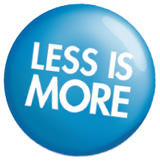I just finished reading Assessing the Impact of Risk Evaluation and Mitigation Strategies (REMS) Requirements on the Pharmaceutical Supply Chain by the Center For Healthcare Supply Chain Research.
If you don’t know what REMS is, here is the FDA page on REMS. Essentially, they are programs that the manufacturer is required to provide to mitigate risks associated with certain drugs.
This study does a good job of describing the REMS landscape and sharing some challenges and opportunities. As someone who was less familiar with this than many of you in the industry, I found it a good foundational piece which got my mind thinking.
Overall REMS can be required to include five distinct elements:
- A medication guide
- A communication plan to healthcare professionals
- An ETASU (Elements to Assure Safe Use)
- An implementation system
- A timetable for submission of assessments of the REMS (required in all cases)
“As part of the REMS submission to the FDA, a manufacturer also must show that the strategy elements will not unduly burden patient access (particularly where patients have life-threatening diseases or difficult access to healthcare providers of the drug).”
Definitely, that access issue is key. These programs add time and hurdles which need to be seamlessly worked into the workflow for physicians and pharmacies and show improvement in outcomes or reduction in risk. And, ideally that should happen with cost in mind.
Given the infrequency that some generalists might have with some specialty products, this can create communication and compliance challenges.
For distributors, this creates both a burden but also a financial upside as they charge to manage and implement the REMS. On the flipside, for physicians, this creates extra effort which isn’t reimbursed. As the study broke out different perspectives from constituents in the process, this along with several others from providers caught my attention:
- Do the REMS requirements hold the physician liable for safety?
- Will the perception of risk impact the likelihood of the patient starting or continuing on therapy?
Certainly from a communications perspective, REMS have led to the buildout of “hubs” that provide services around these drugs in the areas of data management, patient counseling, call center, registry, and content management.
The study estimates the economic impact of these programs on both the distributor and the provider (physician, nurse, and pharmacy). For example, they estimate that a pharmacist at a specialty pharmacy spends 100-165 minutes per patient per month for those on drugs with a REMS requirement.
They pose a question towards the end around generics and biologics which gets at the heart of the cost / benefit tradeoff for bringing a product to market which requires a REMS when part of your value proposition is a lower cost.
Anyways, for those of you interested in the topic, it’s a good read.

 June 30, 2011
June 30, 2011 

















